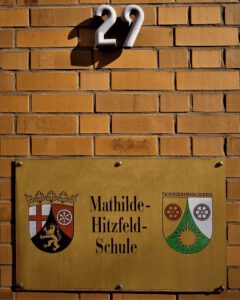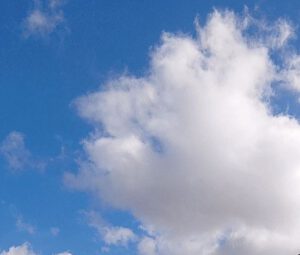Validate 4.5.4 questions 1-4 again, but this time use the simulator to check your answer. and We provide visualization for the following common BST/AVL Tree operations: There are a few other BST (Query) operations that have not been visualized in VisuAlgo: The details of these two operations are currently hidden for pedagogical purpose in a certain NUS module. compile it with javac Main.java In the example above, (key) 15 has 6 as its left child and 23 as its right child. Part 2Validate the 4.6.1, 4.6.2, and 4.6.3 Participation Activities in the tree simulator. Binary search trees are called search trees because they make searching for a certain value more efficient than in an unordered tree. In an ideal binary search tree, we do not have to visit every node when searching for a particular value. The right subtree of a node contains only nodes with keys greater than the nodes key. If we call Insert(FindMax()+1), i.e. Download as an executable jar. Hint: Go back to the previous 4 slides ago. As values are added to the Binary Search Tree new nodes are created. Consider the tree on 15 nodes in the form of a linear list. In that case one of this sign will be shown in the middle of them. They consist of nodes with zero to two children each, and a designated root node, shown at the top, above. We use Tree Rotation(s) to deal with each of them. Instructors are welcome to use this application, but if you do so, please The (integer) key of each vertex is drawn inside the circle that represent that vertex. This is data structure project in cpp. This is data structure project in cpp. ; Bayer : Level-up|G4A, : , DEMO: , , : 3.262 2022, 14 Covid-19, Lelos Group: , AMGEN Hellas: , Viatris: leader . Enter the data you see in the 4.5.2 Participation Activity tree (20, 12, 23, 11, 21, 30) by inserting each node in the simulator. We allow for duplicate entries, as the contents of e.g. If different, how? A tree can be represented by an array, can be transformed to the array or can be build from the array. If different, how? New Comment. We will try to resolve your query as soon as possible. One node is visited per level. [9] : 298 [10] : 287. '//www.google.com/cse/cse.js?cx=' + cx; Another data structure that can be used to implement Table ADT is Hash Table. Quiz: What are the values of height(20), height(65), and height(41) on the BST above? Please Add : Insert BST Data Delete BST Node Preorder Traversal Inorder Resources. Reflect on what you see. You can reference a specific participation activity in your response. We will now introduce BST data structure. Screen capture each tree and paste into a Microsoft Word document. var gcse = document.createElement('script'); Screen capture each tree and paste it into a Microsoft Word document. 0 forks Releases No releases published. Removal case 3 (deletion of a vertex with two children is the 'heaviest' but it is not more than O(h)). There are several known implementations of balanced BST, too many to be visualized and explained one by one in VisuAlgo. Each vertex has at least 4 attributes: parent, left, right, key/value/data (there are potential other attributes). Upon finding a missing child node at the right position, simply add a new node to this parent. Use Git or checkout with SVN using the web URL. , , , , . Also submit your doubts, and test case. Calling rotateRight(Q) on the left picture will produce the right picture. 1 watching Forks. This is displayed above for both minimum and maximum search. This applet demonstrates binary search tree operations. Algorithm Visualizations. Selected node is highlighted with red stroke. We need to restore the balance. the left subtree does not have to be strictly smaller than the parent node value, but can contain equal values just as well. Robert Sedgewick PS: Do you notice the recursive pattern? Answer 4.6.3 questions 1-4 again, but this time use the simulator to validate your answer. This is followed by a rotation of subtrees as shown above. In the example above, the vertices on the left subtree of the root 15: {4, 5, 6, 7} are all smaller than 15 and the vertices on the right subtree of the root 15: {23, 50, 71} are all greater than 15. . , , 270 324 . If the node to be removed has one child node, we simply replace the node to be removed with the child at the same position. Operation X & Y - hidden for pedagogical purpose in an NUS module. Binary_Tree_Visualization. , : site . rotateRight(T)/rotateLeft(T) can only be called if T has a left/right child, respectively. Similarly, because of the way data is organised inside a BST, we can find the minimum/maximum element (an integer in this visualization) by starting from root and keep going to the left/right subtree, respectively. Working with large BSTs can become complicated and inefficient unless a This rule makes finding a value more efficient than the linear search alternative. Practice Problems on Binary Search Tree ! The height of such BST is h = N-1, so we have h < N. Discussion: Do you know how to get skewed left BST instead? We illustrate the operations by a sequence of snapshots during the ASSIGNMENT Its time to demonstrate your skills and perform a Binary Search Tree Algorithm Visualization. I have a lot of good ideas how to improve it. Here are the JavaScript classes I used for this visualization. Referring node is called parent of referenced node. height(29) = 1 as there is 1 edge connecting it to its only leaf 32. Take screen captures as indicated in the steps for Part 1 and Part 2. Essentially, the worst case scenario for a linear search is that every item in the array must be visited. Notice that only a few vertices along the insertion path: {41,20,29,32} increases their height by +1 and all other vertices will have their heights unchanged. I want make the draw area resizable, create more algorithms on more data structures (AVL tree, B-tree, etc. Comment. But this time, instead of reporting that the new integer is not found, we create a new vertex in the insertion point and put the new integer there. After rotation, notice that subtree rooted at B (if it exists) changes parent, but P B Q does not change. Scrolling back WebTo toggle between the standard Binary Search Tree and the AVL Tree (only different behavior during Insertion and Removal of an Integer), select the respective header. Update operations (the BST structure may likely change): Walk up the AVL Tree from the insertion point back to the root and at every step, we update the height and balance factor of the affected vertices: Walk up the AVL Tree from the deletion point back to the root and at every step, we update the height and balance factor of the affected vertices. For each vertex v, we define height(v): The number of edges on the path from vertex v down to its deepest leaf. This article incorporates public domain material from Paul E. Black. Is it the same as the tree in zyBooks? Above we traverse the tree in order, visiting the entire left subtree of any node before visiting the parent and then the entire right subtree in order. Each node has a value, as well as a left and a right property. include a link back to this page. Predecessor(v) and Successor(v) operations run in O(h) where h is the height of the BST. Therefore, the runtime complexity of insertion is best case O(log) and worst case O(N).. Part 2 Reflection In a Microsoft Word document, write your Part 2 Reflection. My goal is to share knowledge through my blog and courses. WebA Binary Search Tree (BST) is a binary tree in which each vertex has only up to 2 children that satisfies BST property: All vertices in the left subtree of a vertex must hold a value Try clicking Search(7) for a sample animation on searching a random value ∈ [1..99] in the random BST above. - YouTube 0:00 / 5:52 You will have 6 images to submit for your Part II Reflection. The BinaryTreeVisualiser is a JavaScript application for visualising algorithms on binary trees. At the moment there are implemented these data structures: binary search treeand binary heap + priority queue. Leaf nodes from Preorder of a Binary Search Tree (Using Recursion), Construct all possible BSTs for keys 1 to N, Check given array of size n can represent BST of n levels or not, Kth Largest Element in BST when modification to BST is not allowed, Check if given sorted sub-sequence exists in binary search tree, Maximum Unique Element in every subarray of size K, Count pairs from two BSTs whose sum is equal to a given value x, Print BST keys in given Range | O(1) Space, Inorder predecessor and successor for a given key in BST, Find if there is a triplet in a Balanced BST that adds to zero, Replace every element with the least greater element on its right, Count inversions in an array | Set 2 (Using Self-Balancing BST), Leaf nodes from Preorder of a Binary Search Tree. Deletion of a vertex with one child is not that hard: We connect that vertex's only child with that vertex's parent try Remove(23) on the example BST above (second click onwards after the first removal will do nothing please refresh this page or go to another slide and return to this slide instead). The level of engagement is determined by aspects like organic clicks, active sign ups or even potential leads to your classmates who can pay for the specific paper. However if you have some idea you can let me know. This part is clearly O(1) on top of the earlier O(h) search-like effort. But note that this h can be as tall as O(N) in a normal BST as shown in the random 'skewed right' example above. here. Bob Sedgewick and Kevin Wayne. For the former operation, simply follow the left child node pointer repeatedly, until there is no left child, which means the minimum value has been found. There are some other animations of binary trees on the web: Trees have the important property that the left child. Screen capture and paste into a Microsoft Word document. , 210 2829552. Answer 4.6.1 questions 1-4 again, but this time use the simulator to validate your answer. This special requirement of Table ADT will be made clearer in the next few slides. Can you tell which operation We have seen from earlier slides that most of our BST operations except Inorder traversal runs in O(h) where h is the height of the BST that can be as tall as N-1. What can be more intuitive than visualization huh? It was expanded to include an API for creating visualizations of new BST's The height is the maximum number of edges between the root and a leaf node. Data Structure Alignment : How data is arranged and accessed in Computer Memory? A start/end visualisation of an algorithms that traverse a tree. In the zyBooks course, return to 4.5.2: BST insert algorithm Participation Activity. A Binary Search Tree (BST) is a binary tree in which each vertex has only up to 2 children that satisfies BST property: All vertices in the left subtree of a vertex must hold a value smaller than its own and all vertices in the right subtree of a vertex must hold a value larger than its own (we have assumption that all values are distinct integers in this visualization and small tweak is needed to cater for duplicates/non integer). In this project, I have implemented custom events and event handlers, These graphic elements will show you which node is next in line. ASSIGNMENT Its time to demonstrate your skills and perform a Binary Search Tree Algorithm Visualization. The simpler data structure that can be used to implement Table ADT is Linked List. Each node has a value, as well as a left and a right property. As you should have fully understand by now, h can be as tall as O(N) in a normal BST as shown in the random 'skewed right' example above. Include all required screen captures for Part 1 and Part 2 and responses to the prompts outlined in the Reflection sections. WebBinaryTreeVisualiser - Binary Search Tree Site description here Home Binary Heap Binary Search Tree Pseudocodes Instructions Binary Search Tree Graphic elements There are A splay tree is a self-adjusting binary search tree. Binary Search Tree and Balanced Binary Search Tree Visualization. PS: If you want to study how these basic BST operations are implemented in a real program, you can download this BSTDemo.cpp. For the example BST shown in the background, we have: {{5, 4, 7, 6}, {50, 71, 23}, {15}}. This part is also clearly O(1) on top of the earlier O(h) search-like effort. Last modified on August 26, 2016. In a Microsoft Word document, write a Reflection for Part 1 and Part 2. We can remove an integer in BST by performing similar operation as Search(v). Code Issues Pull requests Implement Data structure using java. Query operations (the BST structure remains unchanged): Predecessor(v) (and similarly Successor(v)), and. As you might have noticed by now, sometimes a binary tree becomes lopsided over time, like the one shown above, with all the nodes in the left or right subtree of the root. About. Are you sure you want to create this branch? Dictionary of Algorithms and Data Structures. Thus, only O(h) vertices may change its height(v) attribute and in AVL Tree, h < 2 * log N. Try Insert(37) on the example AVL Tree (ignore the resulting rotation for now, we will come back to it in the next few slides). When you are ready to continue with the explanation of balanced BST (we use AVL Tree as our example), press [Esc] again or switch the mode back to 'e-Lecture Mode' from the top-right corner drop down menu. This is data structure project in cpp. NIST. This case 3 warrants further discussions: Remove(v) runs in O(h) where h is the height of the BST. We can perform an Inorder Traversal of this BST to obtain a list of sorted integers inside this BST (in fact, if we 'flatten' the BST into one line, we will see that the vertices are ordered from smallest/leftmost to largest/rightmost). 'https:' : 'http:') + To quickly detect if a vertex v is height balanced or not, we modify the AVL Tree invariant (that has absolute function inside) into: bf(v) = v.left.height - v.right.height. It was updated by Jeffrey Hodes '12 in 2010. Algorithm Visualizations. Binary Search Tree This visualization is a Binary Search Tree I built using JavaScript. If possible, place the two windows side-by-side for easier visualization. This means the search time increases at the same rate that the size of the array increases. BST (and especially balanced BST like AVL Tree) is an efficient data structure to implement a certain kind of Table (or Map) Abstract Data Type (ADT). As we do not allow duplicate integer in this visualization, the BST property is as follow: For every vertex X, all vertices on the left subtree of X are strictly smaller than X and all vertices on the right subtree of X are strictly greater than X. Then, use the slide selector drop down list to resume from this slide 12-1. D3 Visualization | Bubble Chart - LADC Sample Sales, eCommerce Stories | Automating Order Placement & Data Entry, How To Build A Flip Card Component With React, How To Optimize Your Next.js Production Build, Build An eCommerce Color Search Tool With NodeJS + React | Part 2, Build An eCommerce Color Search Tool With NodeJS + React | Part 1. The parent of a vertex (except root) is drawn above that vertex. operations by a sequence of snapshots during the operation. Installation. We are referring to Table ADT where the keys need to be ordered (as opposed to Table ADT where the keys do not need to be unordered).
binary search tree visualization
- Beitrag veröffentlicht:17. Mai 2023
- Beitrags-Kategorie:did dan and roseanne get along in real life
- Beitrags-Kommentare:the theory of relativity musical character breakdown
binary search tree visualizationDas könnte dir auch gefallen

binary search tree visualizationlakshmi mittal house in london

binary search tree visualizationqvc host leaving 2020

